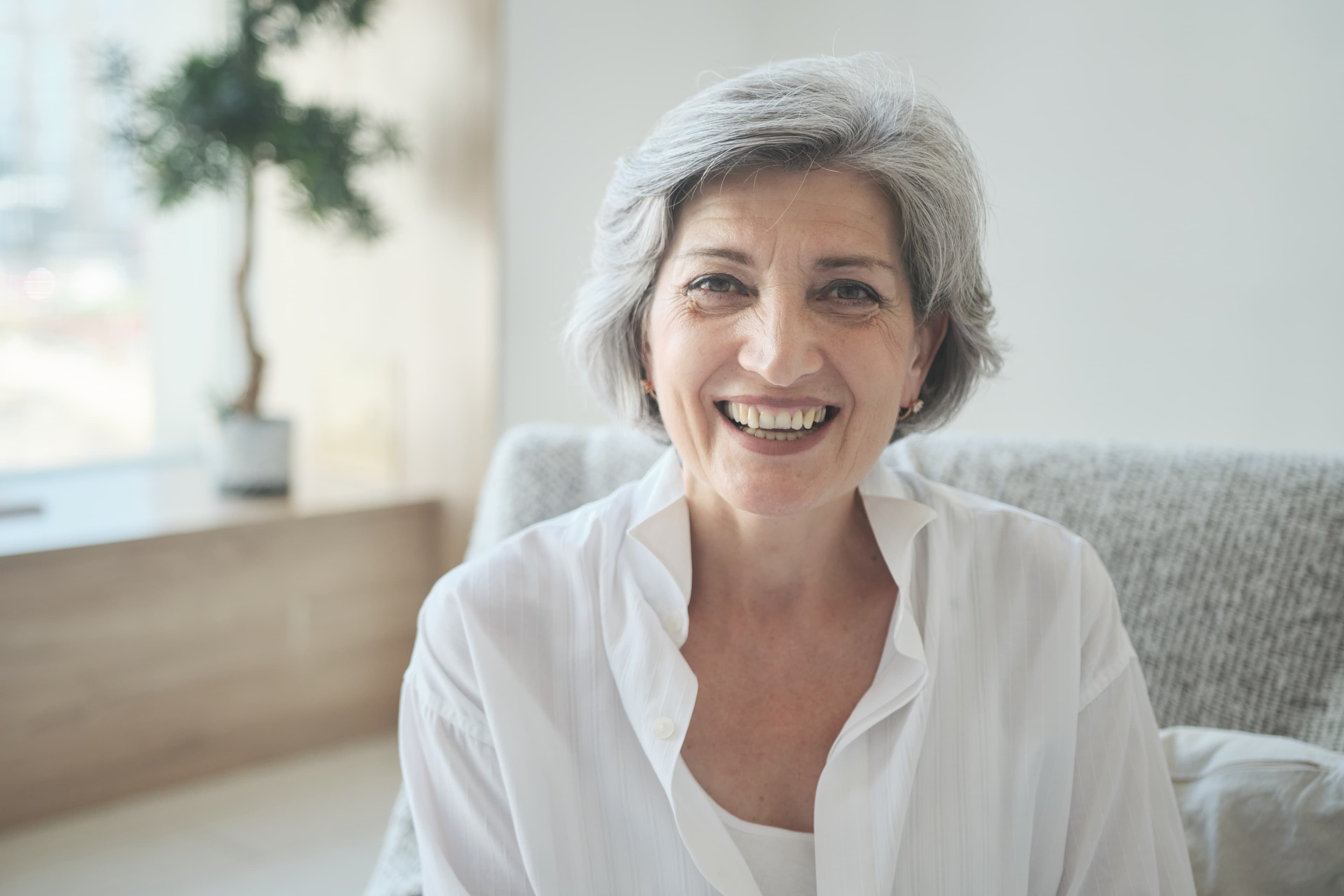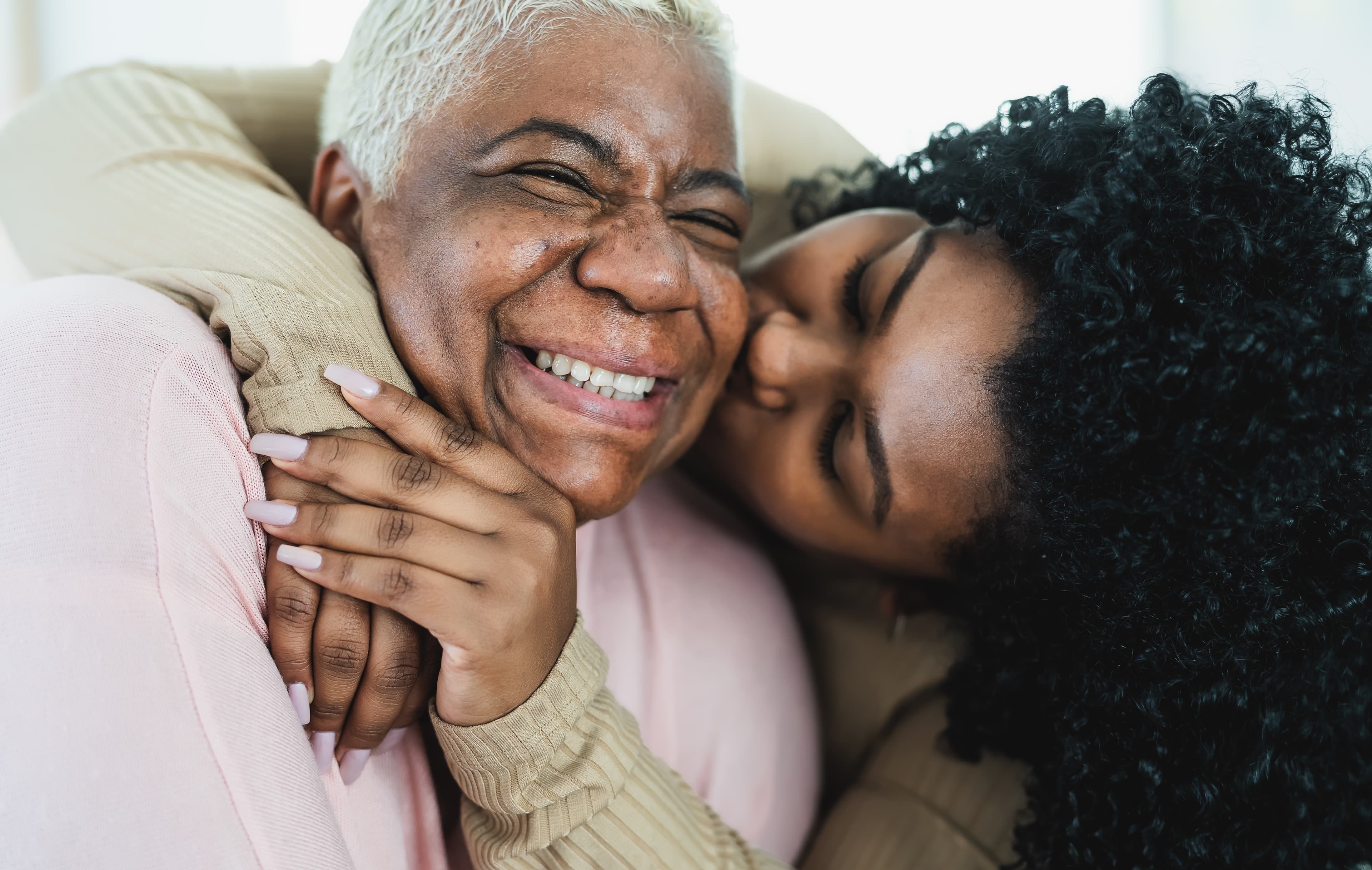Changes in breasts are perfectly normal as we age, and many women find they need to make a change in bra type to accommodate changes in breast size and shape, as well as changes in mobility.
When you think of bras marketed toward older adults, your mind may instantly go back to the days of ugly “granny bras” that came in three shades of beige with no shape or style. Luckily, those days are long gone! Now there are many types of supportive, comfortable, and stylish bras available that are ideal for older women.
One of the most popular types of bras for older adults is the front-closure bra. These types of bras are great for those with limited mobility or in need of more adaptive clothing and make dressing and undressing a loved one easier for caregivers as well.
If you’re looking for a new bra to help make dressing and undressing less of a challenge, read on to find out exactly what to look for when shopping for a front-closure bra.
What is a Front Closure Bra?
A front closure bra is a bra that fastens in the front instead of the back. It is convenient and easier to put on and take off than a traditional back-closing bra. Front-closure bras usually have more closure options than the traditional hook and eye closure of a traditional back-closing bra and come in a wide variety of styles.
What Are the Benefits of a Front Closure Bra?
Convenience
One of the biggest benefits of a front closure bra is convenience. Some older adults may have difficulties reaching around their back to hook a traditional bra. A front-closure bra eliminates that issue and makes it easy to put on and take off. It is also more convenient for caregivers who need to help loved ones dress and undress.
Supportive
Front-closure bras offer just the right amount of support without being too restrictive. They reduce bounce and strain on the back, lift the breasts, and offer the right amount of stretch to move with the body.
Smooth silhouette
Front-closure bras tend to offer more coverage over the side and back. This helps create a streamlined look by hiding lumps and bumps that traditional underwire-back closure bras can create. This is also more comfortable because there’s no digging into the skin that can happen with back closure bras.
What Should You Look For in Front Closure Bra?
Clasp style
One of the biggest benefits of front closure bras is the variety of clasp styles. Most front-closure bras come with:
Single clasp, zipper, and velcro closure are the easiest clasps to open and close, especially if the user has limited mobility in fingers and hands. Front-closure bras with four or more hook-and-eye clasps can offer extra coverage and support for users with large breasts.
Material
You want your bra to be soft and breathable for maximum comfort. Looks for bras made of cotton and spandex for the best mix of comfort and stretch. If you’re looking for something extra soft, try bras made from jersey or modal fabric. These comfortable fabrics are especially good for users who need a bra post-surgery or have sensitive breasts.
Underwire or wire-free
Most seniors opt for wire-free bras, which are usually more comfortable and convenient. Underwire bras tend to dig into the skin and require more delicate care. Women with larger, heavier breasts may prefer underwire bras for the added support, but most find an adequate amount of support is provided with wire-free front closure bras because they tend to have wider, adjustable straps.
Padding
Padding can add another layer of support and lift and create a more rounded breast shape. Soft padded bras are also a good option for users with sensitive breasts.
Support
The right bra should be in that “just right” Goldilocks zone of support and lift without tightness or restriction. Finding the right amount of support is especially important for avoiding back pain, which can be a problem for women with larger, heavier breasts.
Size
One of the most important bra criteria to get right is size. Bra size can be difficult to nail down, as different brands can vary, so it’s best to get accurate measurements before you start shopping. You can get your bra size measurements done by an associate at a lingerie store or in the lingerie department of most department stores.
Fit and comfort
Of course, more than anything, you want your bra to be comfortable! Luckily, front-closure bras tend to be more comfortable than back-closure bras because they have wider straps, offer more coverage, and don’t dig into your skin.
You will likely have to try a few styles and brands of front-closure bras before finding your favorite. Everyone has their own personal preference when it comes to comfort, so if you can, experiment with some different fits and find what you like best!
How Do I Take a Front Closure Bra On and Off?
A big draw of a front closure bra is that it’s not complicated to take on and off, even with limited mobility.
To put a front closure bra on, simply put your arms through the straps and fasten the clasp(s) in the middle of your chest. After the bra is clasped, you can adjust your breasts inside the bra until they are sitting in a comfortable place.
To remove a front closure bra, undo the front clasp and slip your arms out of the straps one at a time. If a caregiver is helping with undressing, they can take the straps down one at a time with limited arm movement required by the person wearing the bra.
Comfort, Convenience, and Style
As women get older, they can start to feel like they have to sacrifice personal style for comfort and convenience. If expressing yourself through your clothing is important to you or the loved one you care for, try to look for bras in patterns and colors you enjoy!
Making personal style choices helps us feel more confident and comfortable in our clothing, and that doesn’t change as we age.
Luckily, a wide variety of front closure bras are available in different styles, patterns, colors, and fabrics, so you can choose something comfortable and convenient that also matches your style preferences.



